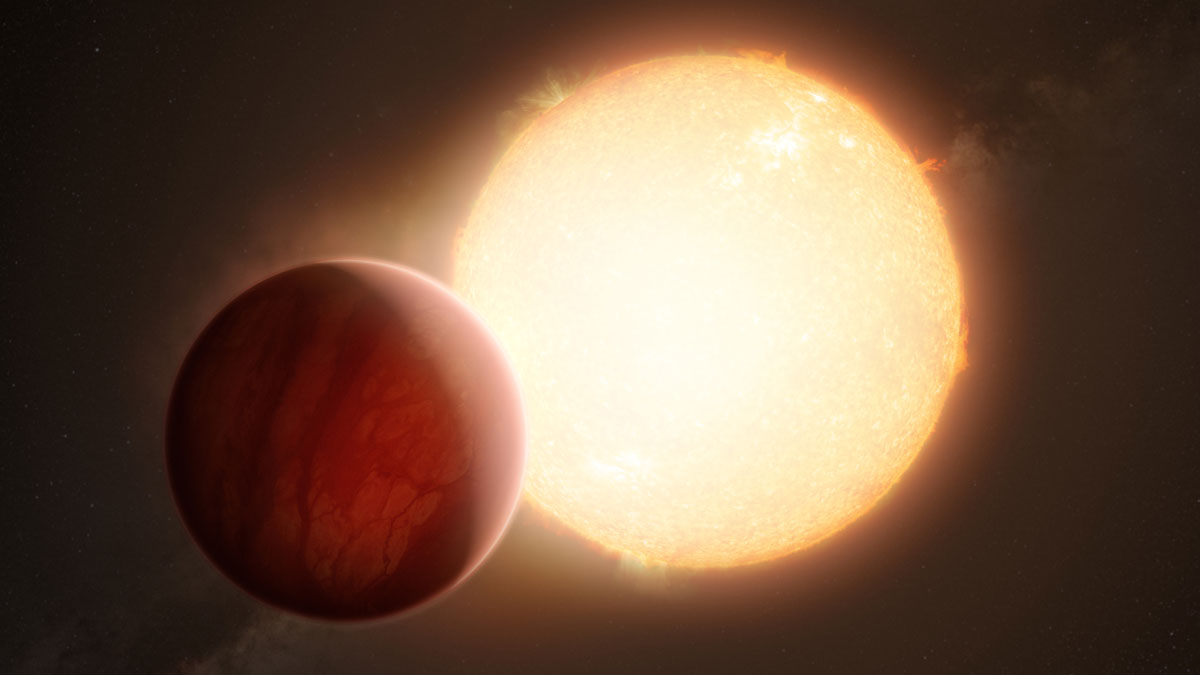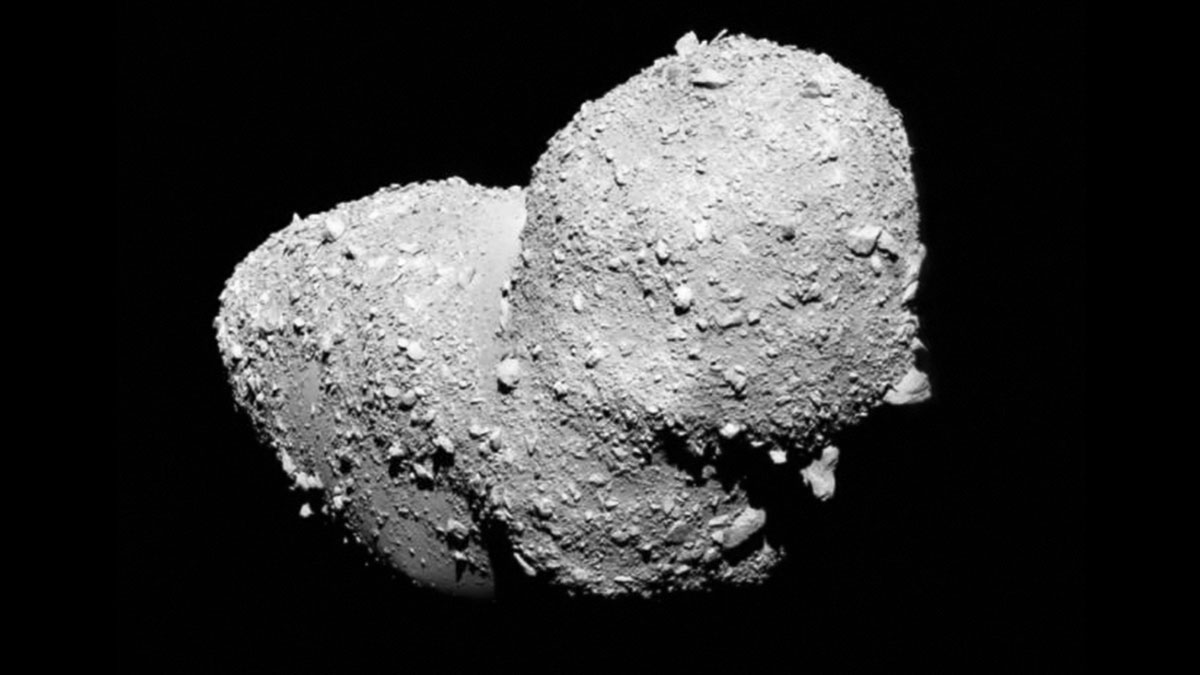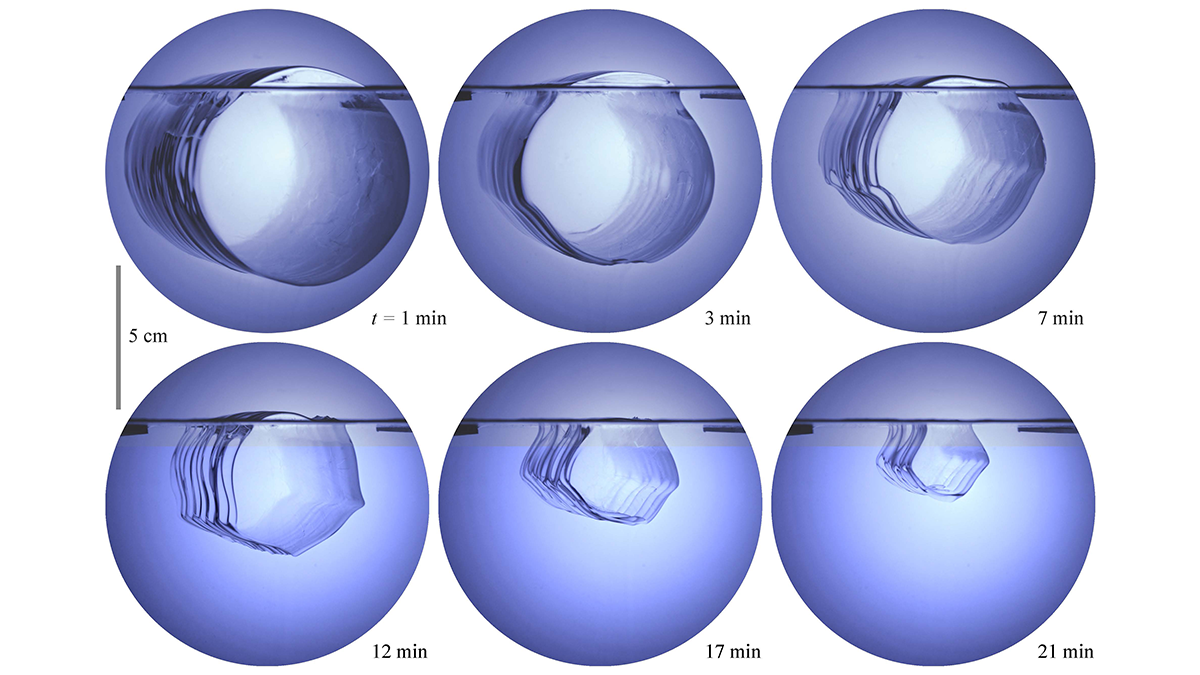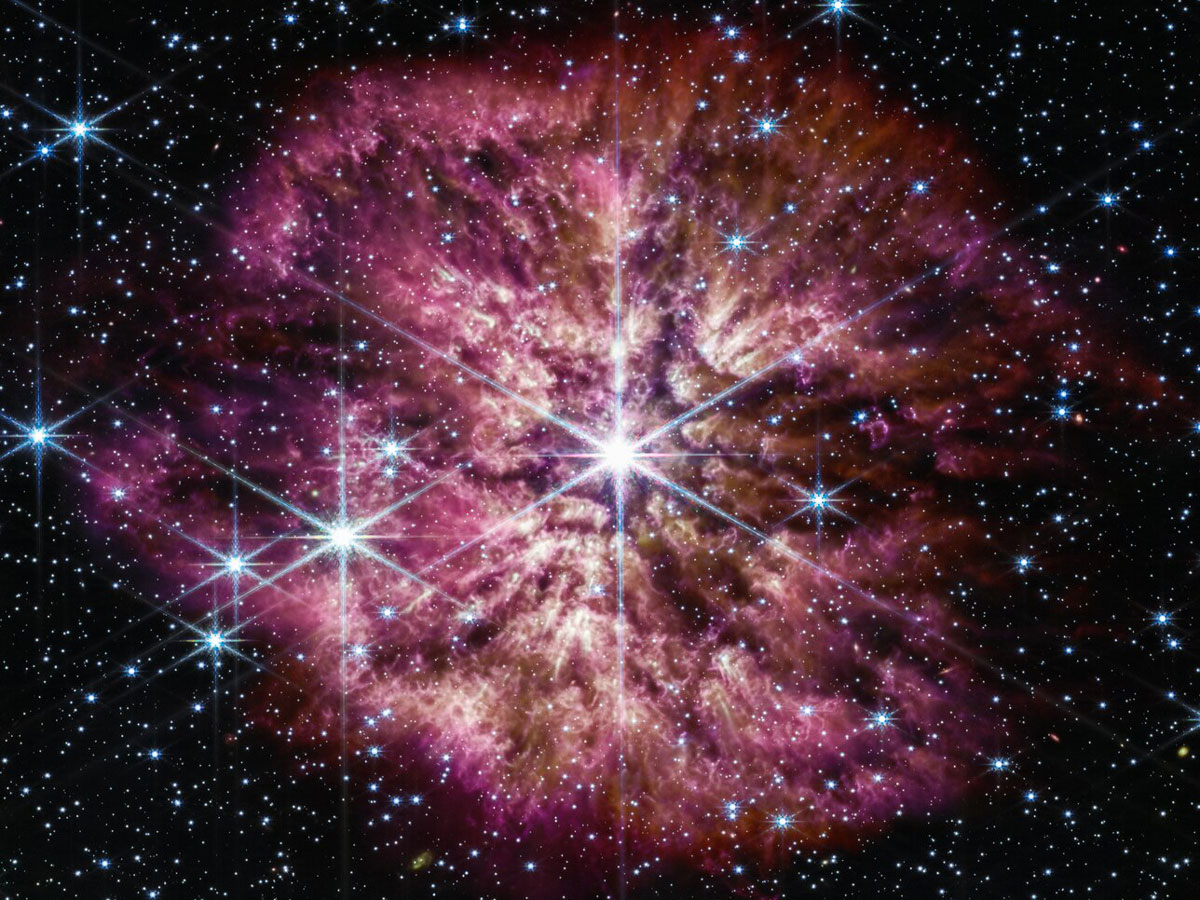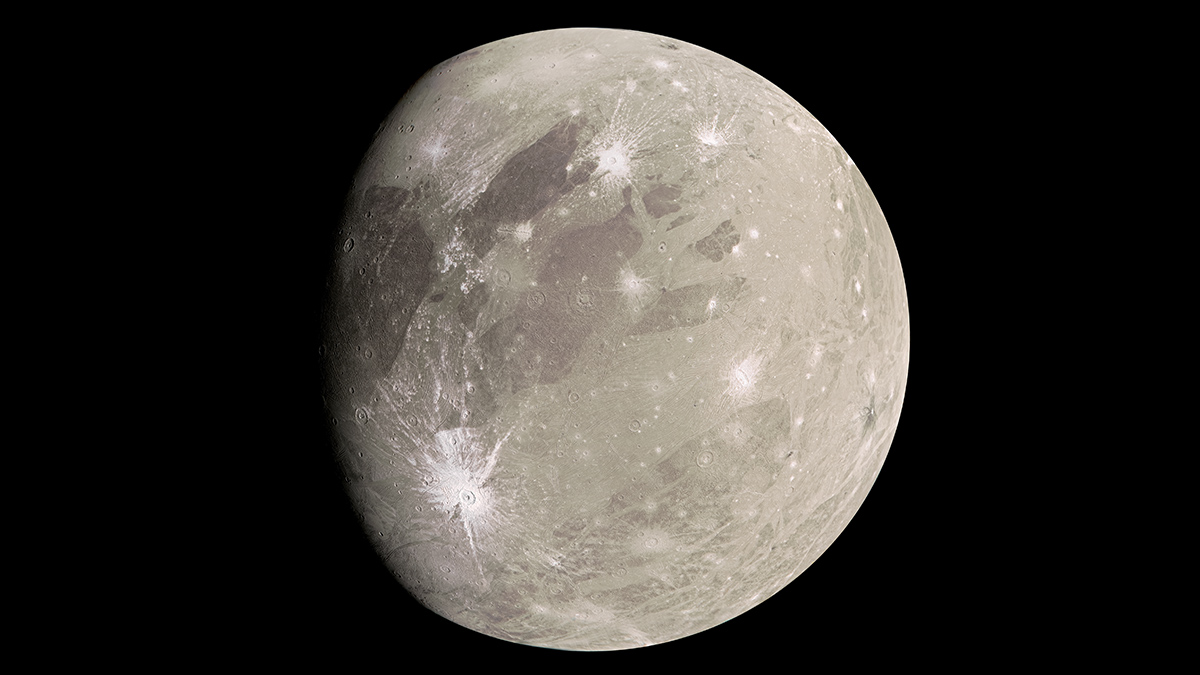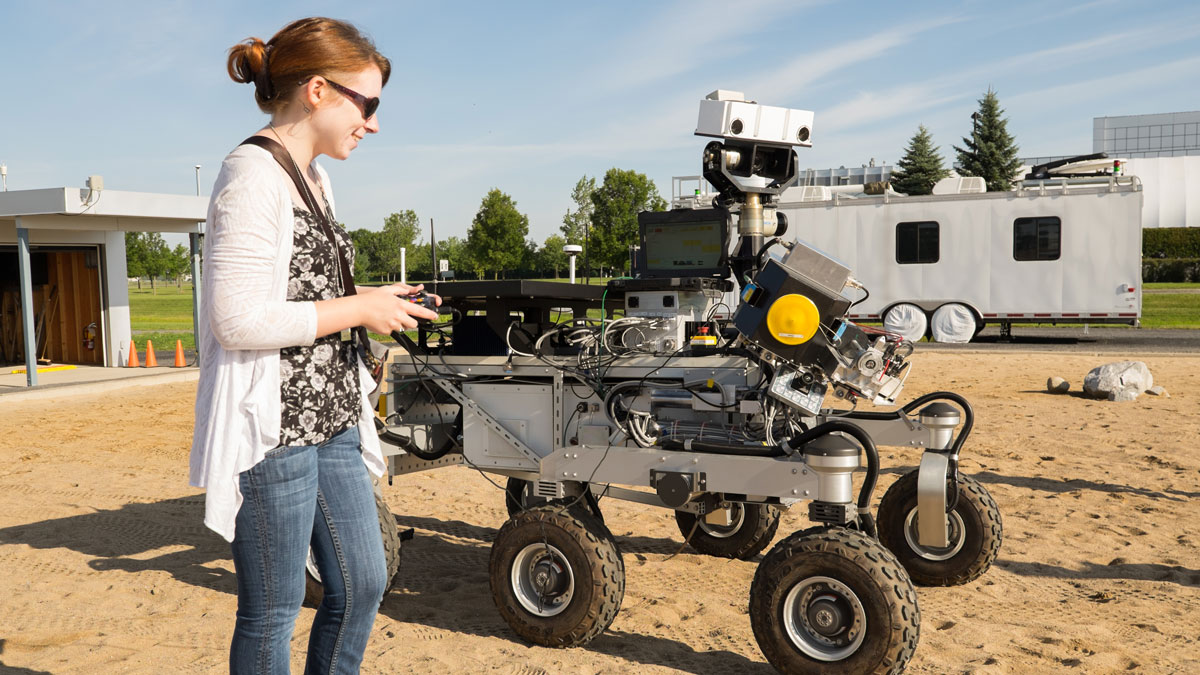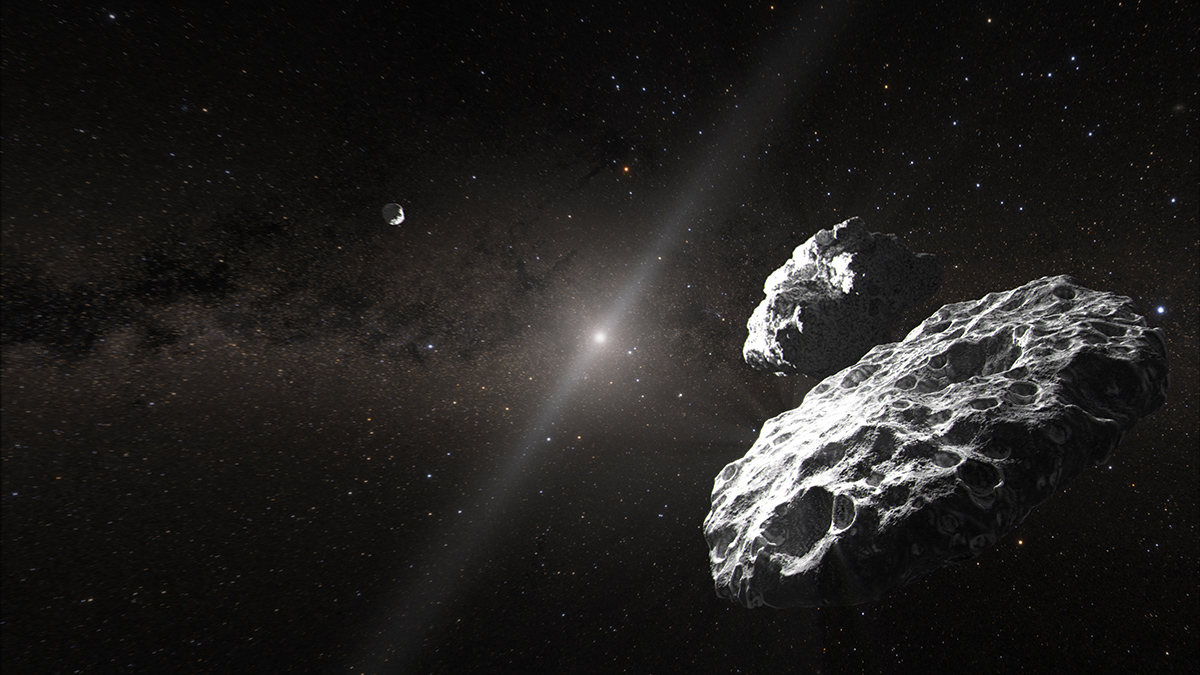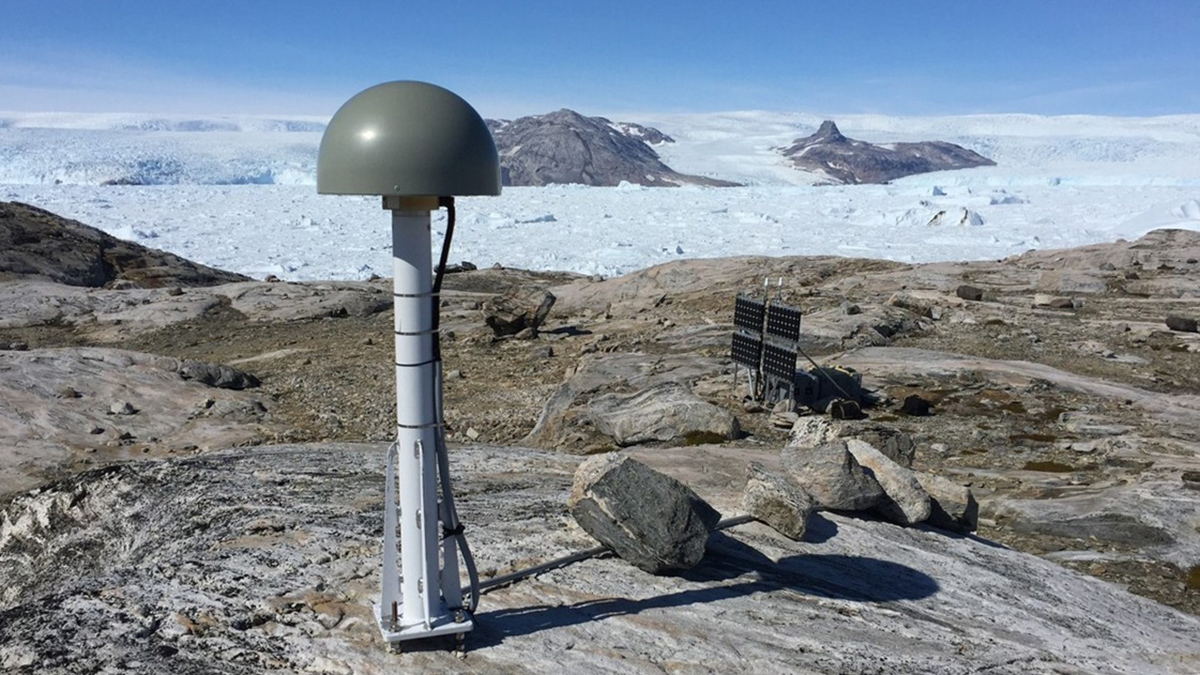A sampling of aging Sun-like stars demonstrates that they likely eat their closest planets.
Matthew R. Francis
What Tumbling Asteroids Tell Us About Their Innards
Data from the Gaia space observatory reveal that many slowly spinning asteroids rotate chaotically. A new theory links that chaos to their inner structure and history.
Melting Cylinders of Ice Reveal an Iceberg’s Tipping Point
New lab experiments on cylinders of pure ice shed light on how icebergs flip over as they melt, demonstrating the link between a warming ocean and small-scale events that can have rippling consequences.
This Star Stripped Off Its Layers Long Before Exploding
A star 2 billion light-years away apparently shed most of its outer layers before exploding, providing new insights into stellar structure—and new mysteries for astronomers to solve.
Infrared Instruments Could Spot Exotic Ice on Other Worlds
Phases of ice that exist naturally only on frozen moons could be detected using infrared spectroscopy, according to new laboratory experiments.
Tanya Harrison: Roving on Mars
This planetary geologist has worked on nearly every Mars rover while connecting government, universities, the private sector, and the public.
Distant Icy Twins Might Actually Be Triplets
The trans-Neptunian object Altjira, 44 times farther from the Sun than Earth is, could be the second known trinary, confirming a theory about the formation of our solar system.
A Dragonfly for Titan
A new eight-rotor robotic probe will head to the solar system’s most Earth-like moon. Here’s what its team is doing to prepare.
Greenland Ice Sheet Stores Hidden Water Throughout the Melt Season
A new method uses stations around Greenland’s coast to measure how much meltwater weighs down the bedrock beneath the ice, improving our understanding of its contribution to sea level rise.
The Relatively Messy Problem with Lunar Clocks
Using Einstein’s theory of general relativity, physicists found that clocks on the Moon would run 56 microseconds faster than clocks on Earth. That finding will help future lunar missions navigate.

